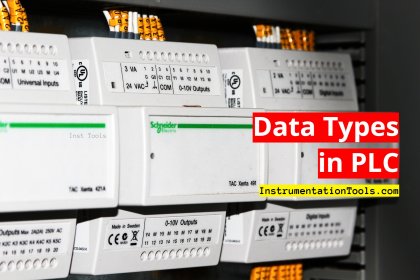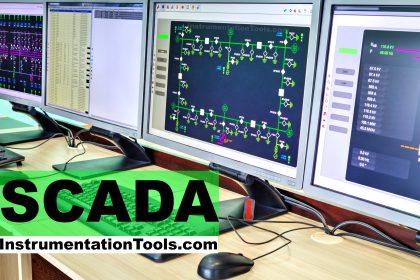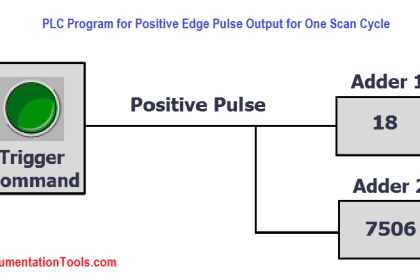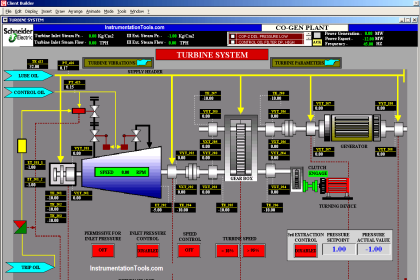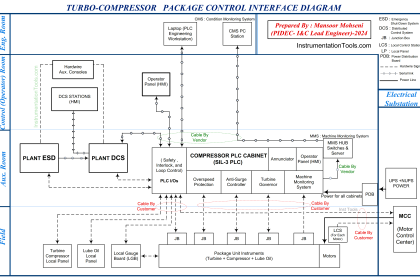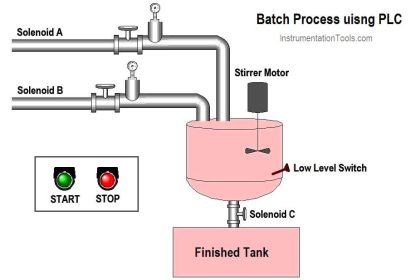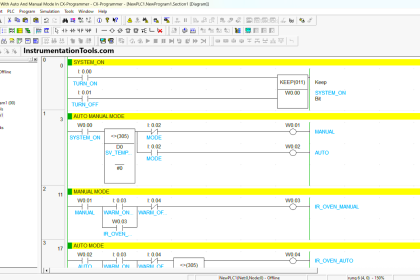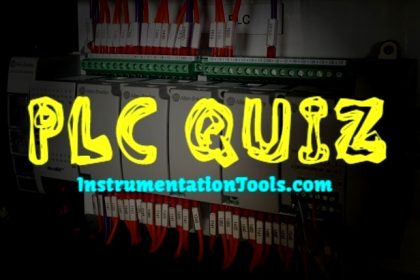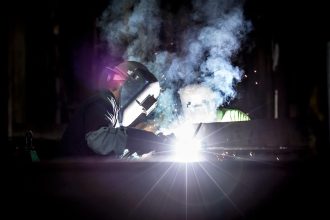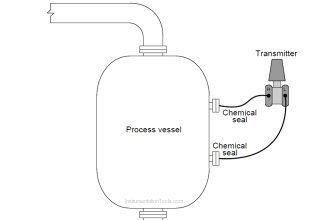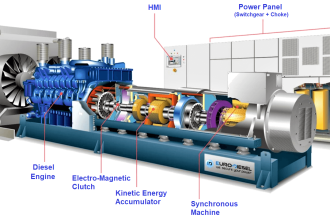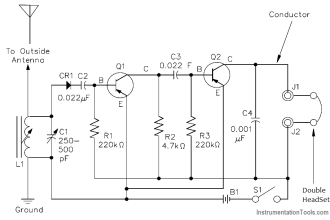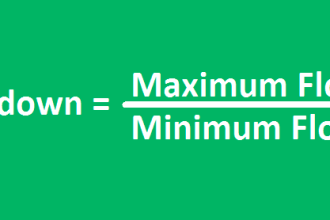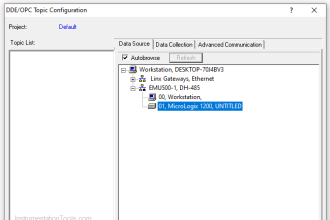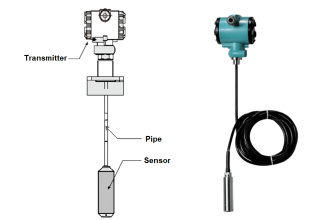PLC and HMI are two essential components in industrial automation. PLC and HMI have unique functionalities, advantages, and limitations.
Programmable logic controllers manage and control machines and the human-machine interface enables operators to interact with machines and control systems. Understanding the differences and similarities between these two devices is crucial in selecting the right automation solution for a particular application.
The PLC and HMI can be termed similar to a CPU and monitor.
In this post, we will learn the difference between PLC and HMI.
What is PLC?
PLC stands for the programmable logic controller. It is a device in which you can write a program logic as well as configure the inputs and outputs in it.
Simply, consider the flow of input, logic, and output. The input is a push button and the output is a motor. When you press the input, the hardware voltage will be converted into a digital bit in the PLC. A logic is written in the PLC that when the input is received, it will turn on the output.
So, according to the push button input received, the processor of the PLC will turn on the output. The digital bit output will be converted into a hardware voltage. This voltage will then turn on the motor. This is PLC.
A PLC is a device that connects with IOs and various networks, processes the logic according to it, and thus, controls the final system. So, PLC is basically a combination of hardware and software. You need to have knowledge of both terms to work with them properly.
What is HMI?
HMI stands for human-machine interface. It is a device in which you can view what is happening inside the PLC through graphical representations.
Simply, let us further extend the example we saw in PLC. We know the logic is being processed inside a PLC. But, we want to see the exact status of the inputs and outputs. We want to see whether the input is pressed or not; we want to see whether the output has turned on or not.
So, to view the graphics and the current state of the logic, HMI is required. In HMI, you can design screens where you can show the status of buttons and motors. Through this, you can just view the whole process properly. This is the purpose of HMI.
An HMI is a device that shows the IO’s, settings, and other processes in the PLC logic according to it and thus, shows us the final system. So, HMI is basically a system of graphics. You need to have knowledge of the symbols, color combinations, icons, and graphical arrangement to work with it properly.
Difference between PLC and HMI
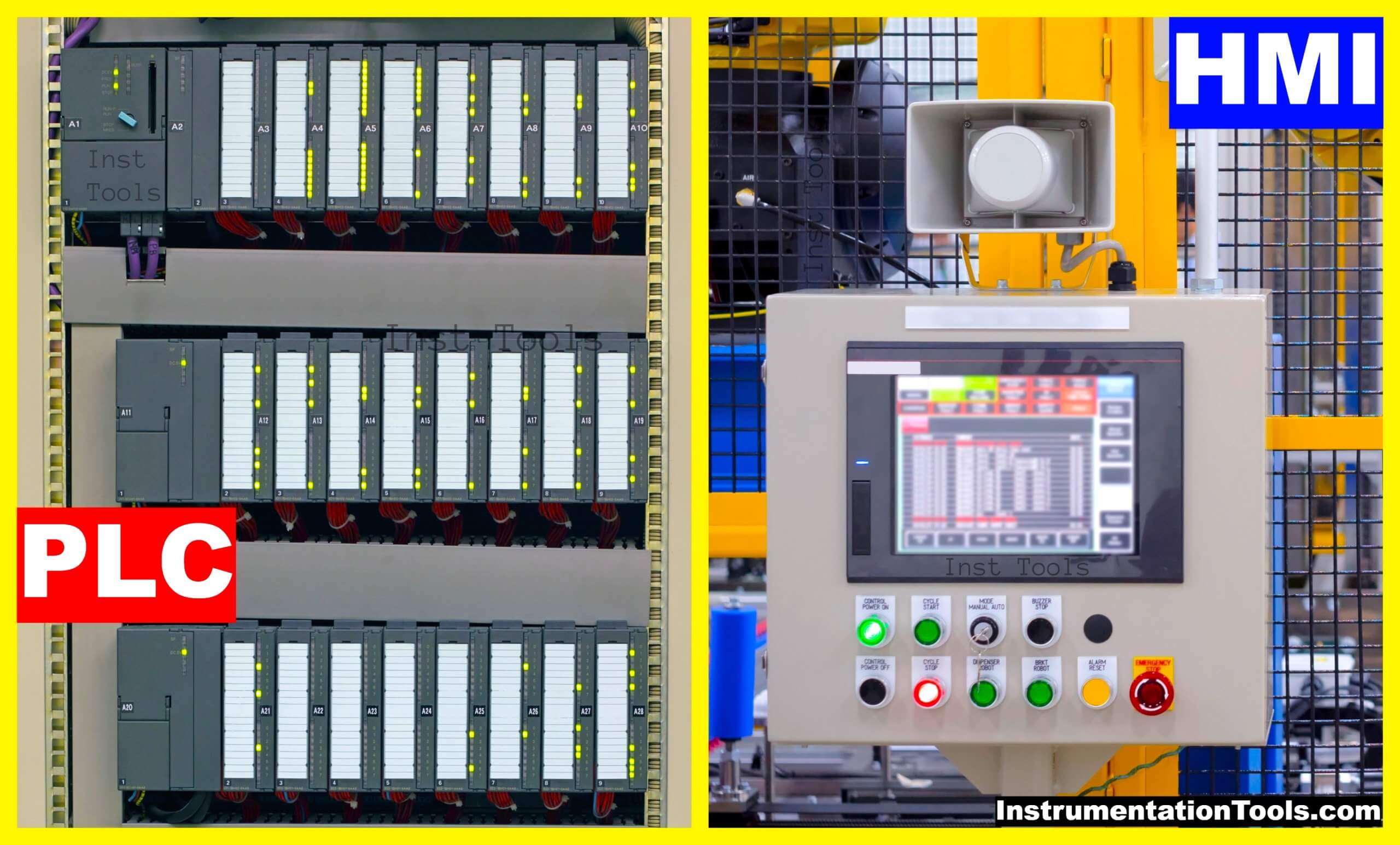
- In PLC, you have to write the logic, whereas, in HMI, you have to design the logic view.
- You can change and monitor the parameters in HMI, whereas in PLC, you have to configure the parameters to process the program accordingly.
- In HMI, you can define and work with audit trails, reports, trends, prints, and other advanced tools; whereas in PLC, you can define and work with libraries, hardware configuration, network configuration, and other advanced tools.
- Simply say, the PLC is the brain and the HMI is the eyes.
Basically, by understanding this, you must have pretty much understood the clear differences and the roles of both of them. PLC is the logical part, whereas HMI is the graphical part.
In this way, we understand the difference between PLC and HMI.
If you liked this article, then please subscribe to our YouTube Channel for Electrical, Electronics, Instrumentation, PLC, and SCADA video tutorials.
You can also follow us on Facebook and Twitter to receive daily updates.
Read Next:
- Motor Feedback PLC Logic
- Steps in PLC System Design
- SCADA System Vulnerabilities
- Delta PLC and VFD with Modbus
- Industrial Automation Documents
